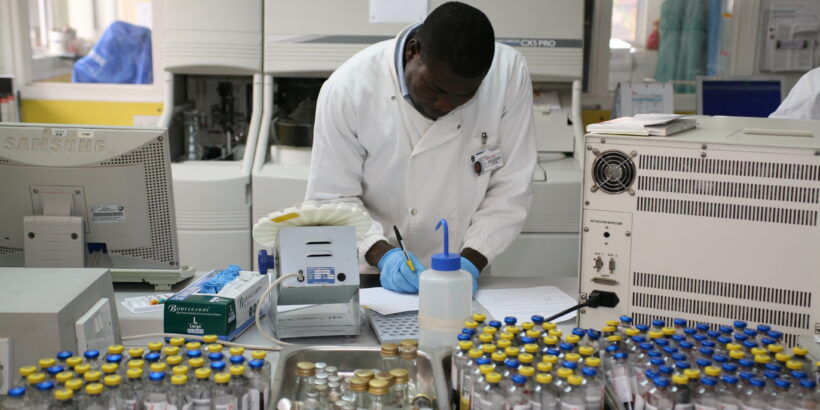Accurate diagnosis and treatment of typhoid is difficult in many low- and middle-income countries where the typhoid burden is highest. Blood culture-confirmed diagnosis, the gold standard, is expensive and requires laboratory equipment that is often unavailable in community health facilities. Typhoid diagnosis is often done clinically, or presumptively, based on symptoms, and antibiotics are suggested for treatment. But a lack of diagnostics contributes to drug-resistant typhoid.
Global treatment standards outline appropriate antibiotics for typhoid treatment. However, this assumes that accurate typhoid diagnosis, ideally from blood cultures, is possible, which is not the reality in many low- and middle-income countries.
Difficulties with typhoid diagnosis contribute to drug resistance
Without an accurate point-of-care diagnostic, which could be administered at a lower-tier health facility, clinicians often rely on clinical or presumptive diagnoses. However, this diagnosis based on symptoms alone cannot detect a drug-resistant strain of typhoid. The symptoms between typhoid strains do not differ, thus leading to the possibility that a clinician prescribes an antibiotic to which the typhoid strain is resistant. It is only after several days of taking the antibiotic and not seeing an improvement in symptoms that it becomes clear a person may have a drug-resistant strain. During this time, bacteria continue to improve their resistance to myriad classes of antibiotics.
Alternatively, blood cultures correctly identify a typhoid infection in about 60 percent of cases. However, the results of a blood culture are dependent on several factors, including the volume of blood collected, the prior administration of antibiotics, and the timing of the blood draw. Additionally, depending on the logistics of the health facility and testing laboratory, it can take several days for a clinician to receive the results of a blood culture. During this delay, the risk of worsening symptoms is quite high, especially for children. This may lead to clinicians prescribing antibiotics for immediate treatment while awaiting the results of the blood culture. If the antibiotics prescribed are not appropriate for the strain, symptoms can worsen, and the bacteria can further strengthen its nonsusceptibility to the treatment.
Delays in getting access to appropriate treatment can also lead patients to self-medicate, perhaps obtaining antibiotics from unqualified private sources. This can further increase the chance of taking unprescribed antibiotics and contribute to S. Typhi and other bacteria developing drug resistance.
TCV offers a near-term solution
WHO recommends typhoid conjugate vaccines (TCV) as an effective and available way to protect against typhoid, including drug-resistant strains. Expanding coverage of TCV through routine immunization can reduce the number of people contracting typhoid, thus reducing the need for antibiotics, and helping to slow the further emergence of drug-resistant typhoid strains.
Improvement of more cost-effective rapid typhoid diagnostic tests can help us avoid overuse and misuse of antibiotics. Even so, we know how to prevent typhoid. By accelerating access to WASH interventions and TCVs, we can save lives while we wait for improved typhoid diagnostics.
Cover Photo: A lab in Malawi. Credit: Madalitso Mvula/ TyVAC.



